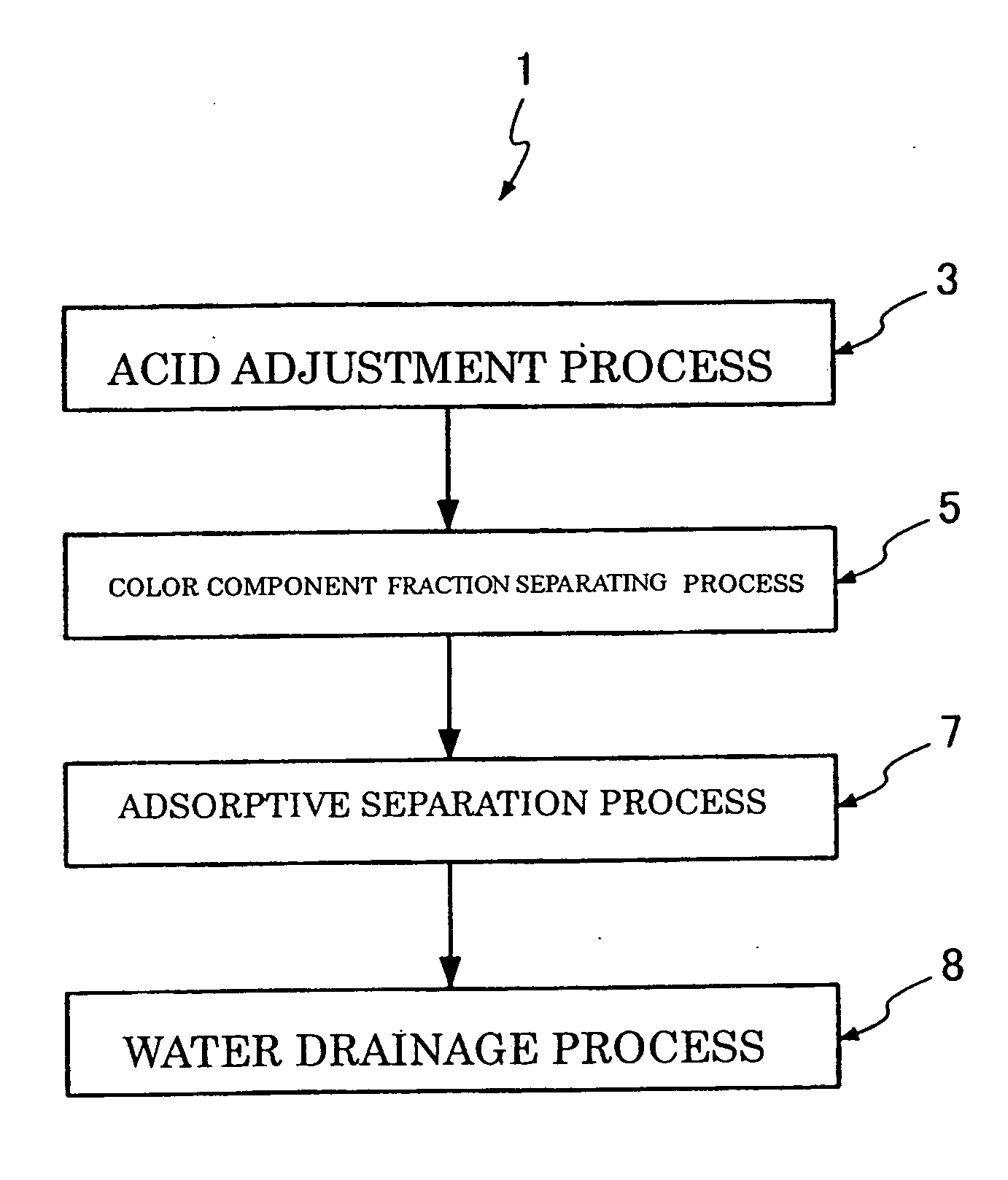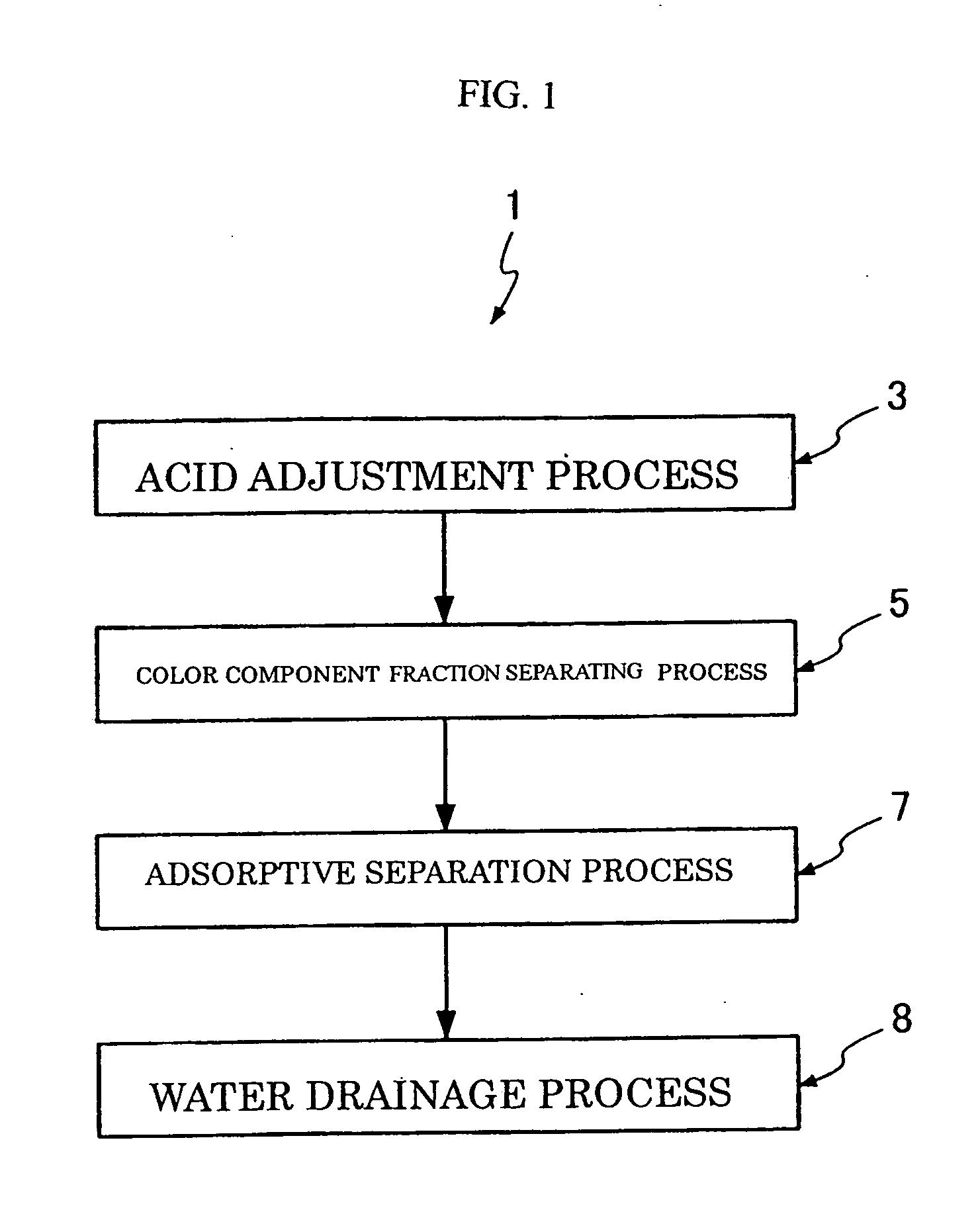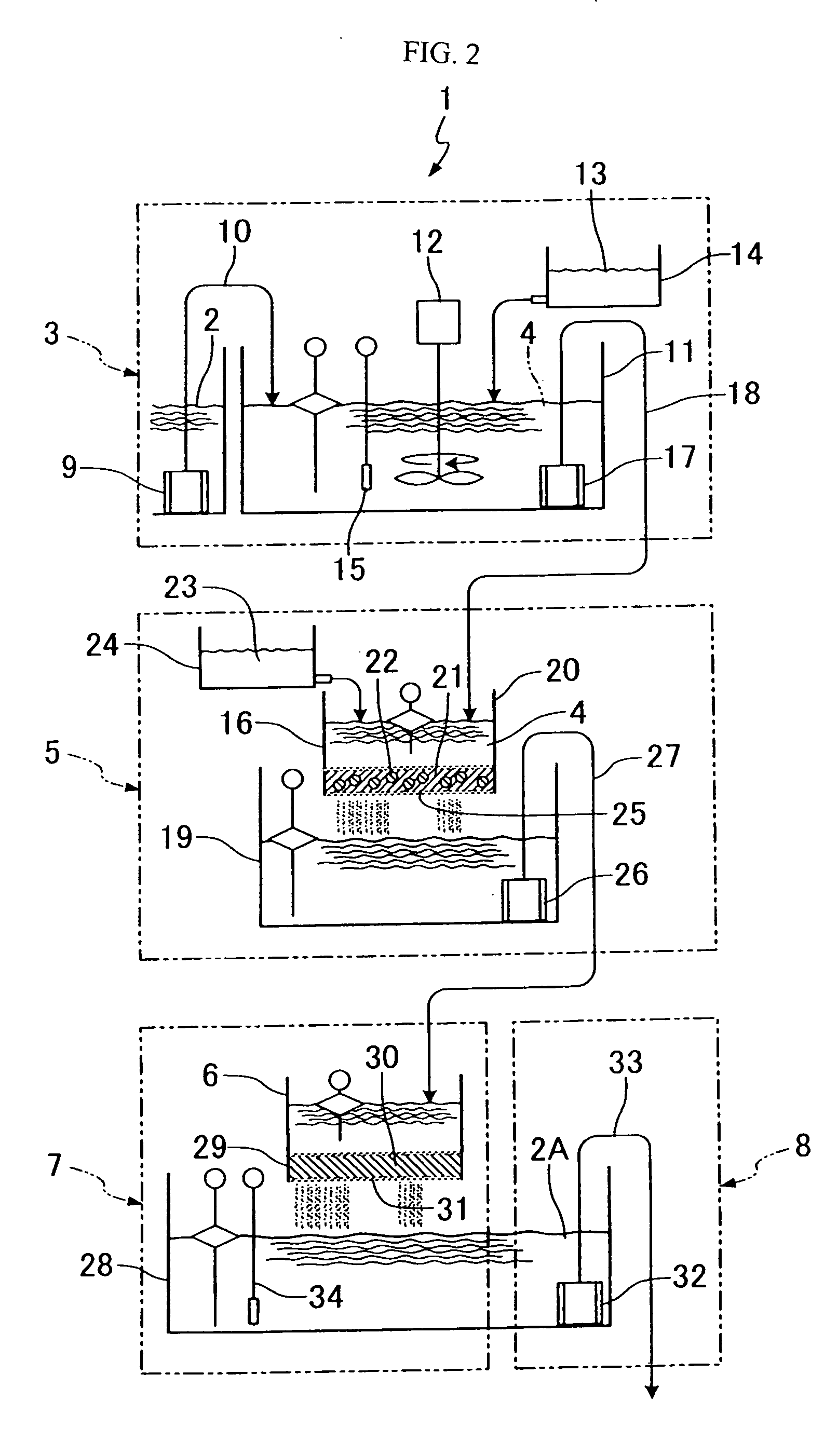Colored wastewater discoloration method
a wastewater and discoloration technology, applied in biological water/sewage treatment, multi-stage water/sewage treatment, separation processes, etc., can solve the problems of inability to achieve satisfactory treatment, discoloration has hardly been achieved ever, and none of such methods use a single technique, etc., to achieve the effect of treating equally effectively
- Summary
- Abstract
- Description
- Claims
- Application Information
AI Technical Summary
Benefits of technology
Problems solved by technology
Method used
Image
Examples
second embodiment
[0045]A second embodiment to practice the present invention is shown in FIGS. 3 and 4. It is distinguished from the first preferred embodiment to practice the present invention that a second adsorptive separation process 35 utilizing a microorganisms-embedded filter layer 31 is performed after the adsorptive separation process 7. A colored wastewater discoloration method 1A utilizing a second adsorptive separation process 35 as described above provides effects similar to those of the first preferred embodiment to practice the present invention, as well as additional adsorptive separation of color components of the colored wastewater.
[0046]A third embodiment to practice the present invention is shown in FIGS. 5 and 6. It is distinguished from the second embodiment to practice the present invention that: the acid adjuster can be provided to contact microorganisms-embedded filter layers 31,31 in the adsorptive separation process 7 and a second adsorptive separation process 35, the trea...
fourth embodiment
[0048]A fourth embodiment to practice the present invention is shown in FIGS. 7 and 8. It is distinguished from the first preferred embodiment to practice the present invention in that a color component fraction separation process 5A is performed by utilizing a color component fraction separation filter layer 16A having filter layers 25, 25 installed in such manner as to form a dual layer within the color component fraction separation filter cylinder 20. A colored wastewater discoloration method 1B utilizing a color component fraction separation process 5A as described above provides effects similar to those of the first preferred embodiment to practice the present invention.
fifth embodiment
[0049]A fifth embodiment to practice the present invention is shown in FIGS. 9 and 10. It is distinguished from the first preferred embodiment to practice the present invention in that an adsorptive separation process 7A is performed by utilizing a microorganisms-embedded filter 6A having filter layers 31, 31 installed in such manner as to form a dual layer within the color component fraction separation filter cylinder 29. A colored wastewater discoloration method 1C utilizing an adsorptive separation process 7A as described above provides effects similar to those of the first preferred embodiment to practice the present invention.
PUM
 Login to View More
Login to View More Abstract
Description
Claims
Application Information
 Login to View More
Login to View More - R&D
- Intellectual Property
- Life Sciences
- Materials
- Tech Scout
- Unparalleled Data Quality
- Higher Quality Content
- 60% Fewer Hallucinations
Browse by: Latest US Patents, China's latest patents, Technical Efficacy Thesaurus, Application Domain, Technology Topic, Popular Technical Reports.
© 2025 PatSnap. All rights reserved.Legal|Privacy policy|Modern Slavery Act Transparency Statement|Sitemap|About US| Contact US: help@patsnap.com



